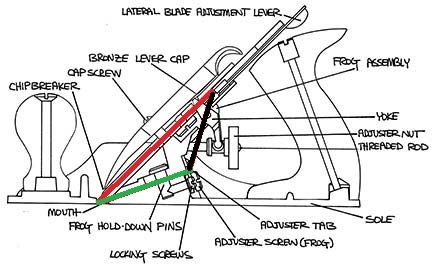J_SAMa":tkc7lxe9 said:
Deja vu?
This came up a while ago...
Again i think the only advantage that a BU plane has is it rides much lower and therefore better for one-handed block planes (easier to hold than a bevel down).
Despite what a lot of people have been saying LA planes aren't better shooting planes than BD's. Bedding angle 13+ bevel 30= 43 degrees. 2 degrees lower than 45 degrees common pitch, why bother?
+1 on Kees' blindfolded test idea

I'm afraid that you are way off understanding how a BU smoother works with a statement like this. Just to educate you, the cutting angle of a BU plane can be made much steeper with a high microbevel. For example, a 50 degree microbevel would create a plane with a 62 degree cutting angle. This would smooth just about any interlocked grain without tearout.
I have wanted to reply to Kees but do not know where to start. Corneel, I'm sorry, but I do not understand any of your writings. They just do not many sense to me. Perhaps it is too much Christmas pudding

To BB, I think that you and I are on the same wavelength - whew! My use of a windsurfing term is to try and describe that (let's call it "gravity") can be shifted around, that we do this either by designing it in or we do it in the way we hold or use a tool (in this particular case, a handplane). "Hang" may indeed be an alternate term. I use "hang" to describe the relationship of a saw handle to the saw plate. I can see how you would use it with a handplane -the relationship of the handle to the cutting edge.
Mignal, the razee design is intended to lower the centre of gravity.
Regards from Perth
Derek

































